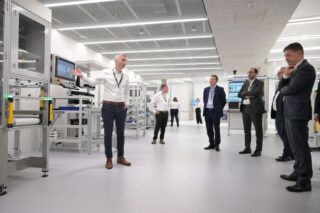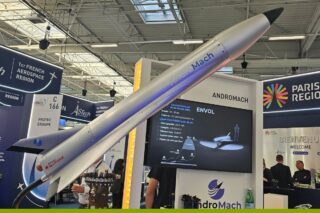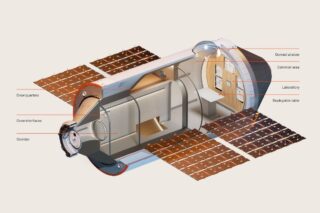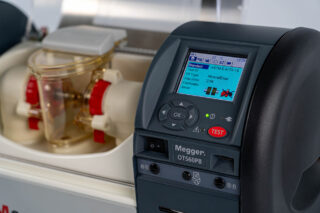Honeywell recently launched Versatilis Transmitters aiming to enhance the reliability of rotating equipment for plant operators. This health monitoring tool empowers users with essential insights into equipment performance, allowing them to optimize uptime and ensure maximum reliability. During Honeywell User Groupe Conference in Orlando last June, we spoke with Achal Nath, Senior Director for product management within Honeywell’s Industrial Instrumentation Group to know more about how Versatilis can help plant operators make informed decisions and take proactive maintenance measures.
Honeywell has introduced its Versatilis™ Transmitters solution for condition-based monitoring of rotating equipment in various industries. These transmitters provide essential measurements of equipment health, including vibration, surface temperature, and acoustics, enabling companies to improve safety, availability, and reliability.
The seamless integration with Honeywell’s Experion HS and other SCADA or asset management platforms allows for predictive maintenance, reducing unplanned downtime by anticipating equipment failures before they occur.

What is the concept behind predictive maintenance and how is it achieved using Honeywell’s sensors and specialized software?
Achal Nath: “Predictive maintenance involves conducting maintenance on a piece of equipment well before it fails. The key is to assess the health of the equipment and perform maintenance just in time—neither too early nor too late—to prevent any potential failures. The aim is to avoid letting the instrument fail completely by reading and understanding signals from various equipment (pumps, motors, fans, blowers, or centrifuge compressors).
To achieve this, a sensor or instrument is required to read, monitor and interpret the signals effectively, and this sensor is typically equipped with communication capabilities. By detecting early signs of deterioration, these signals can indicate when maintenance is necessary for specific parts of the equipment.
The interpretation of the collected data is accomplished through specialized software, which we have developed to complement the sensors. This software continuously analyzes the data and utilizes algorithms to provide valuable insights to the customer. For instance, it may identify a bearing in a pump that requires replacement or detect misalignment between the rotors of a motor/pump combination, indicating the need for adjustment.”

What does the Versatilis sensor instrument measure?
Achal Nath: “The Versatilis sensor instrument measures various parameters such as vibration, temperature, pressure, acoustics and humidity. In fact, it serves as a platform with 18 different sensors, and each instrument can host a combination of any of these sensors. For example, one instrument may contain six specific sensors, while another instrument could have a different set of sensors, such as those used for measuring methane levels in industrial facilities for sustainability purposes or sensors for measuring magnetic flux, intrusive temperature, pressure, or even a gyroscope. This adaptability makes the Versatilis platform a sophisticated and flexible advancement to the product.”

Versatilis is a modular sensing platform, then?
Achal Nath: “Yes, that’s very well expressed. In fact, I’ll use that! So it’s a modular sensing platform, and one of the key considerations we’ve made is to keep it wireless. This decision is crucial because, while it might not be obvious to those unfamiliar with the industry, it is crystal clear to the users that they do not want to add any more cabling to their industrial facilities. The process of laying cables can be very cumbersome and challenging. So, we have made sure to implement wireless solutions both for power and communication. This approach is an integral part of the platform, and we will continue to maintain it as wireless. We offer multiple wireless options such as wifi, LoRa, and Bluetooth, providing flexibility for our customers to choose the one that best fits their specific needs.”

And what about 5G?
Achal Nath: “5G consumes a substantial amount of power, leading to rapid battery depletion. Another challenge with 5G is its dependence on specific countries. The 5G technology implemented in the US may not function properly in Germany, so it would necessitate customization for each country’s requirements. An alternative and preferable solution, in my opinion, would be to have 5G at the gateway level. The sensors can communicate via wifi, and then at the gateway, the communication can switch to 5G. This approach mirrors the setup we commonly have in our homes, where all the devices are connected via wifi, and the router handles cellular or wired connections. By employing this strategy, we can optimize power usage while ensuring efficient and country-specific 5G communication at the gateway level.”

Can you explain the compatibility of the predictive maintenance system by Honeywell with existing sensors from other manufacturers?
Achal Nath: “Our system is designed to be independent and agnostic, both on the instrument and software sides. This means that the instrument can communicate with other software platforms seamlessly. So, if a customer already has sensors from third-party manufacturers installed in their plants and is collecting data from those sensors, they can still integrate Honeywell’s predictive maintenance system into their setup.”

Is artificial intelligence or deep learning implemented in this predictive maintenance system?
Achal Nath: “As of now, there is no implementation of artificial intelligence or deep learning in our predictive maintenance system, and we haven’t found a pressing need for it. Implementing AI or deep learning requires substantial data sets, and currently, we do not have such large datasets available for this purpose. However, we are open to exploring AI for our product portfolios, and we have already started researching its potential application. It’s essential for us to fully understand its benefits and determine if our data sets are suitable before considering its integration. We believe in adopting technology that serves a practical purpose and solves specific problems rather than blindly following trends. While we do find AI and deep learning intriguing, we are focused on understanding its utility and relevance in the context of industrial instrumentation and software. Once we determine its potential value and suitability for our products, we may consider incorporating it into our predictive maintenance system. But at this moment, AI and deep learning are not a part of our system.”

How does Honeywell address data security concerns in its cloud-based system?
Achal Nath: “Data security is a top priority for us, especially as data is transmitted outside the plant in our cloud-based system. To ensure robust cybersecurity, we focus on implementing security measures right from the instrument level. Since our system is wireless, we take into account the security standards dictated by Bluetooth and wifi, adhering strictly to their guidelines. We strike a delicate balance between cybersecurity and interoperability. It is crucial not to block data flow while maintaining robust security protocols. Therefore, we ensure standards-based cybersecurity not only at the instrument but also at every subsequent layer, including data transmission from the gateway to the cloud.As the industry gradually embraces the model of data transmission to the cloud, we have witnessed customers becoming more open to this approach. Some customers have their own cloud instances, and they prefer data to be directed there. We respect this preference and offer the flexibility to transmit data to their specific cloud instance securely.”

During a session, you talked about the cost of data. Can you be more specific?
Achal Nath: “When looking at traditional industrial instrumentation, the cost of data is influenced by several components. The actual instrument is just one part, and it represents a minor portion of the total cost. In the conventional setup, the instrument is connected through wires to a junction box in the field. Multiple junction boxes are then linked to a central junction box in the control room. Additionally, marshaling cabinets are used to rearrange the wiring, and input/output channels in the control system network are connected to specific input channels. This chain of components, including controllers and servers, adds up to significant costs. For example, while the sensor itself may cost $1000, the cumulative cost of all these layers may amount to $10,000 or more. As a result, obtaining a single data point can become quite expensive, reaching up to $11,000. Such high data costs have been a barrier to implementing IoT applications in industrial facilities using this conventional approach. However, with our innovative class of instruments, we aim to eliminate these cost-intensive layers. By utilizing a wireless setup, our instruments connect to a gateway, and from there, data can be seamlessly transmitted to the internet, the cloud, or servers. By skipping the traditional wired infrastructure, we successfully remove the additional costs associated with data transmission. This approach makes data more affordable for industrial facilities, encouraging the adoption of IoT applications without the financial burden of the previous setup.”

In which sectors of the industry is this IIoT instrument and vibration-based predictive maintenance applicable?
Achal Nath: “This IIoT instrument, along with vibration-based predictive maintenance, is highly versatile and can be applied across various sectors of the industry. It is essentially industry agnostic, meaning it can be utilized by any sector that deals with motors, pumps, fans, blowers, or compressors. Currently, this technology is in its evolutionary phase, just beginning to be adopted by industries. However, its potential applications are vast. Any industry involved in moving fluids, liquids, gases, or solid slurries, essentially anything that flows, can benefit from this innovative technology. As adoption progresses, we will witness its widespread implementation across numerous sectors, making it a valuable asset for predictive maintenance in industrial facilities.”











